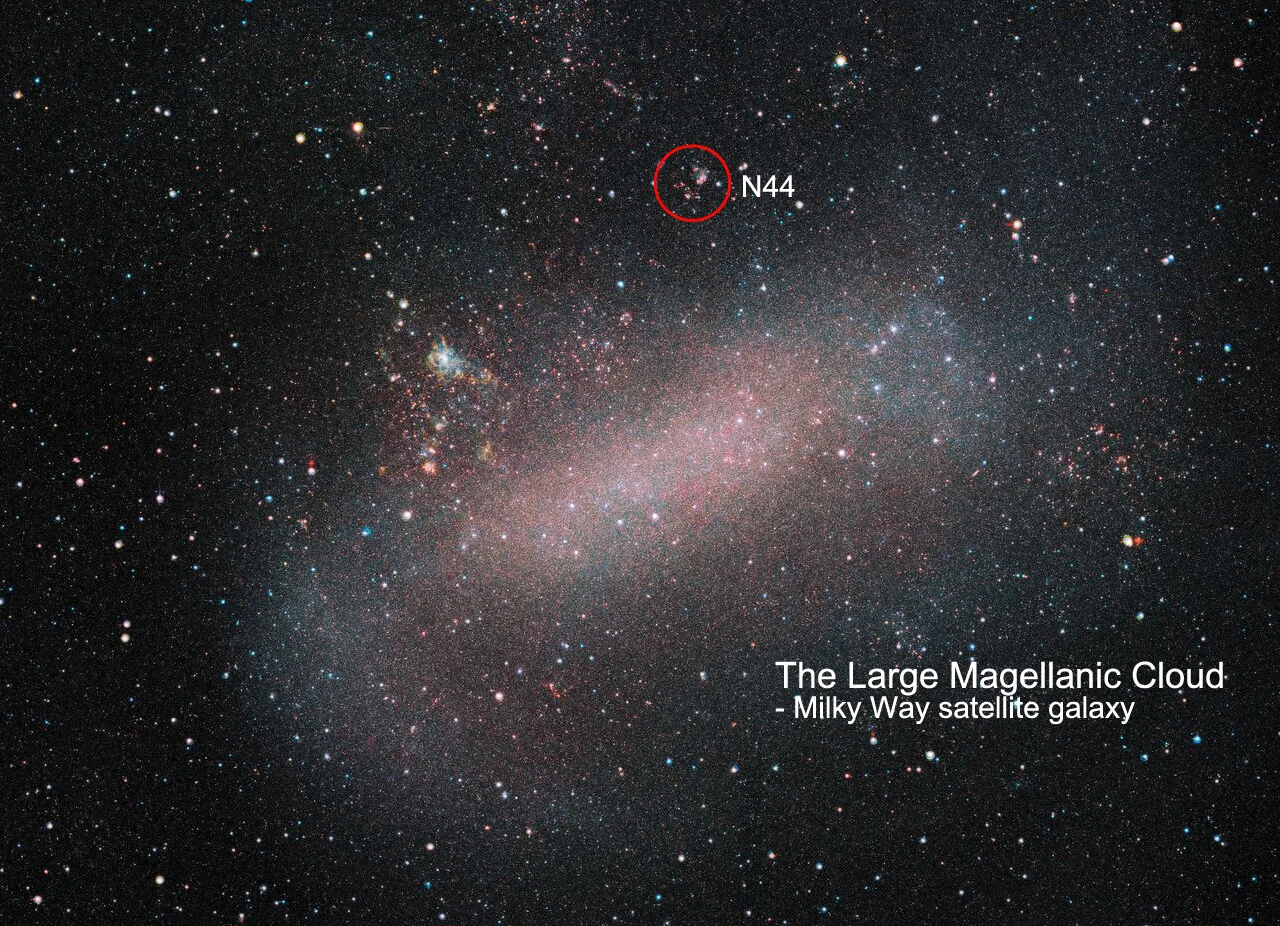
Vast 'superbubble' captured by Hubble is a deep-space mystery for astronomers
Space contains many mysteries, and in some cases, we are lucky enough that the efforts to solve them provide us with beautiful images to marvel over.
In a new image snapped by the Hubble Space Telescope, some mysterious force is hollowing out a gigantic 'superbubble' inside a distant nebula. Astronomers are still puzzled over what is behind this spectacular sight.
One hundred and seventy thousand light years away, in a satellite galaxy of our Milky Way known as the Large Magellanic Cloud, a shining nebula named N44 has drawn the attention of astronomers. Observed by various telescopes over the years, N44 is an immense cloud of gas and dust, roughly 1,000 light years across.

What's remarkable about this particular space cloud is the immense void carved into the middle of it.
N44 contains what astronomers call a 'superbubble' — a gigantic cavity that spans around 250 light years from side to side.

*The N44 emission nebula shines in this new image taken by Hubble, showing off the immense 'superbubble' that is being blown inside it. Credit: NASA/ESA/V. Ksoll, D. Gouliermis, et al./Gladys Kober
Although it contains numerous massive stars, and one supernova remnant has been identified nearby, no source perfectly explains how this bubble formed.
According to NASA: "Stellar winds expelled by massive stars in the bubble's interior may have driven away the gas, but this is inconsistent with measured wind velocities in the bubble. Another possibility, since the nebula is filled with massive stars that would expire in titanic explosions, is that the expanding shells of old supernovae sculpted the cosmic cavern."
This new image was captured during a study of the massive, young stars populating the rim of the bubble, which was led by Victor Ksoll from the Center for Astronomy at Heidelberg University.
According to their research, Ksoll and his colleagues identified these young stars as being part of numerous active star-forming regions of the nebula.
Based on this, NASA said that the 5-million-year difference between the age of these star-forming regions and the age of the stars inside the void points to "multiple, chain-reaction star-forming events."
Stars are thought to form when nebulae are disturbed by outside forces, which causes them to collapse in on themselves due to gravity.
Were these star-forming regions produced simply by the gases being mashed together by the push of stellar winds? Or are they due to the expanding shockwaves of supernovae? The answer is currently anyone's guess, but if astronomers can solve this mystery, they can discover how this superbubble came to be.










